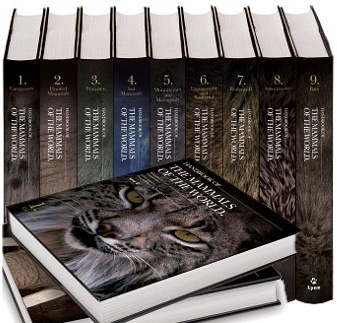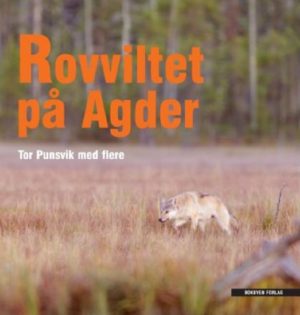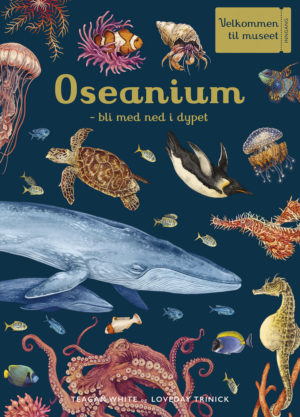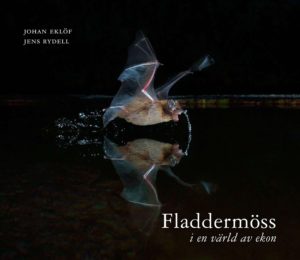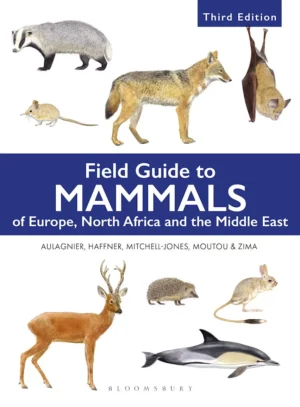Introduction
The Handbook of the Mammals of the World (HMW) will be an unprecedented reference work for the Class Mammalia. This series of eight volumes will describe every currently recognized mammal species, along with an overview of each mammalian family. It will provide up-to-date information on the systematic relationships, natural history, ecology, and current conservation status for all mammals. Every species will be illustrated and each chapter will also include many color photographs. HMW will provide comprehensive worldwide coverage by involving an international group of expert authors.
This mission began when Josep del Hoyo from Lynx Edicions met with Don Wilson to discuss a mammal project to parallel the ongoing, successful Handbook of the Birds of the World. Sue Ruff was then recruited to help with the work on this new series. The order Carnivora was chosen as the initial volume and the family Felidae was selected as a pilot project to promote interest for HMW; Mel and Fiona Sunquist were commissioned to produce this chapter. After this successful launch, Lynx Edicions enlisted the support of Russell Mittermeier from Conservation International, which has been essential to making this project viable. Russ, and also Michael Hoffmann, helped with the selection of outstanding authors for each family.
An important driving force behind HMW is to support the conservation of mammals and their habitats, a task made easier with the involvement of Conservation International and IUCN (International Union for Conservation of Nature). A major aim of HMW is to illustrate the extraordinary diversity of mammals and to promote poorly known species, especially those in South America, Africa, and Asia, in the hope that this will inspire additional studies. The IUCN Red Data Books play an important role in conservation planning worldwide and highlight how little we know about the status of many mammalian species. A clear goal of HMW is to take an additional step by examining the status of every one of the world’s mammal species, describing the threats, and outlining the possible conservation measures.
HMW has followed traditionally accepted classifications, primarily the Mammal Species of the World (Wilson & Reeder, 2005). However, we have made several improvements. The views of the authors, all of whom are acknowledged authorities, have been incorporated into this volume. We have taken into account the descriptions of new species and ongoing systematic revisions, which continue to add to our knowledge of the phylogenetic relationships within the Carnivora. The section on Systematics within each family chapter reviews the on-going taxonomic work and recent research using new molecular techniques, which have revolutionized our ability to analyze evolutionary relationships.
Each chapter of this volume is dedicated to a particular family. The Family Text gives a general overview of each carnivore family and includes numerous color photographs illustrating members of the family. This is followed by the individual Species Accounts, which are concise summaries of the known information from the primary literature. Both sections include an extensive bibliography.
Family Text
In general, each volume will present the taxa in phylogenetic sequence, which reflects the evolutionary relationships as we currently understand them. That sequence for the carnivores is listed in Table 1. For some genera, the phylogenetic relationships of the species are still unknown, and we have listed them alphabetically in those cases. Three additional families of the order Carnivora are not covered in this volume. The walruses, seals, and sea lions will be treated along with cetaceans and sirenians in a later volume dedicated to sea mammals. Such departures from our basic commitment to phylogenetic sequence will be rare in the series, but in this case it makes much more sense to group marine mammals together.
The family texts are also amply illustrated with color Photographs that not only depict as many species as possible, but also illustrate particular aspects that are mentioned in the text. Each family chapter includes the following sections:
Summary-box. The summary-box provides a quick reference to the basic details of the family. It includes a brief description of the most distinctive characteristics of its members, the size range, the distribution of the whole family (also illustrated with a world map), the family’s habitat characteristics, the number of genera and species, and the number of species listed by various categories in the most recent edition of The IUCN Red List of Threatened SpeciesTM. The number for total taxa includes genera, species, and currently recognized subspecies. The number of subspecies changes frequently with new studies, so the numbers given reflect only the number we are recognizing at the time of publication. Numbers of taxa listed as extinct include only those extinctions documented since 1600. Silhouettes of the largest and smallest species and a human figure make comparisons possible. The full-length human figure represents a man 180 cm tall.
- Systematics. This section provides an overview of the taxonomy and phylogeny of the species within each family and describes their evolution and origins. The major taxonomic source followed is the Mammal Species of the World (Wilson & Reeder, 2005). Any deviations from this reference are based on recent revisions and the opinions of the authors.
- Morphological Aspects. This section describes the structure and external appearance of the members of a family and covers topics such as pelage, locomotion, and dentition.
- Habitat. This section describes the various types of habitat that are used for feeding, denning, and breeding.
- General Habits. This is an additional section in most family chapters, which covers topics that are not included elsewhere, such as activity patterns, and special behaviors like hibernation and defense mechanisms.
- Communication. This section describes the different ways in which a carnivore species communicates with conspecifics and other animals, and includes topics such as scent marking, vocalizations, and visual displays.
- Food and Feeding. Food requirements, types of food eaten, seasonal variations in diet, and foraging techniques are covered in this section.
- Breeding. This section outlines the breeding strategies within each family and includes topics such as delayed implantation, juvenile development, and care of the young.
- Movements, Home range and Social organization. This section describes daily, seasonal, and dispersal movement patterns, and discusses the spatial and social organization of the different species within each family.
- Relationship with Humans. This section describes the impact that some carnivore species have on humans and the ways they are exploited by people. It also includes the beliefs, legends, and traditions held about them, and the part they play in the everyday life of some cultures.
- Status and Conservation. This section summarizes the conservation status of the family members, with regard to their population levels, and details the threats they face. There are discussions of the causes of declines in threatened species and an examination of the conservation measures that can be adopted to secure their survival.
- General Bibliography. This section lists the references that were used to compose the text and includes scientific papers, monographs, books, technical publications, and conference proceedings.
Species Accounts
There is a species account for each currently recognized species. Extinct species are usually discussed in the family text, but they are not treated with a species account, while species that are recognized as Extinct in the Wild (see below) are covered by a species account. All of the extant carnivore species are illustrated in the Plates, which show the details of the pelage and general morphology. To ensure accuracy, these illustrations are based on photographs of wild and captive animals, museum skins, and detailed descriptions. The form depicted is a male of the nominate subspecies, if not otherwise indicated. Important variations that occur are also illustrated, especially when there are marked differences between the sexes or between different subspecies.
Each species account starts with the English vernacular name, followed by the scientific name. The English names are based on Wilson & Reeder (2005); when alternative versions have been used it has been to increase clarity and to avoid confusion. All vernacular names of mammals are capitalized. Each species name is also given in French, German, and Spanish. French names were reviewed by Normand David, German names were reviewed by Gustav Peters and Rainer Hutterer, and Spanish names were reviewed by the Sociedad Española para la Conservación y Estudio de los Mamíferos (SECEM). Other common names are also listed. Occasionally, the use of a single English name to apply to the entire geographic range of a species might be confusing. An example would be Ursus arctos, the Brown Bear. Much of the North American population has long been known as the Grizzly Bear, and it is less confusing to refer to them as Grizzlies, rather than Brown Bears, when documenting facts from the literature.
The Taxonomy section lists the name as it was originally described, the author of the original species description, the year of the description, and the type locality. Taxonomic issues are discussed here and the number of recognized subspecies (if none, the species is monotypic). Extinct subspecies are covered here; they are not listed in the section on Subspecies and Distribution.
In the Subspecies and Distribution section, the countries and areas in which the species occurs in are given. For each subspecies, the original author is listed, along with the year, always without parentheses. The references for the original species and subspecies descriptions are listed in the References of Scientific Descriptions section at the end of the book. For localities, the following abbreviations are used: N (North), S (South), E (East), W (West), C (Central), I/Is (Island/Islands), and Mt/Mts (Mountain/Mountains). These abbreviations are sometimes written out in full to avoid confusion. Place names follow the Times Atlas of the World, although older country names are occasionally used. For many species, the number of available subspecific names exceeds the currently recognized subspecies. Many species still await comprehensive taxonomic revisions that will establish the correct number of recognizable subspecies. For almost all, the exact limits of subspecies are poorly known, making it difficult to delimit subspecific boundaries in any other than the most general terms.
Each species account is accompanied by a Distribution map; since the size and scale of these maps precludes precision they are intended only to give an approximate idea of the range of a species. However, to improve the level of detail, an appropriate scale of each map has been chosen. The range shown on a map should always be taken in conjunction with the section on Distribution, which often gives additional information. We have avoided the indiscriminate shading of large continuous areas that would have represented the original range of the species, and instead attempted to only depict these areas where the species has been recorded recently. Introduced populations are generally not included on the maps. In some cases arrows are used to highlight details of a distribution, such as small islands. In the few cases where a species is thought to be extinct, the last areas in which they were recorded are shaded gray.
The purpose of the Descriptive notes section is to complement the detail shown in the color plates. Body measurements are given and a general description of the animal, which includes details of the pelage and other body features. The dental formula is included: I = Incisors, C = Canines, P = Premolars, M = Molars; the numbers refer to the number of teeth on the upper/lower side of half the jaw, e.g. I 3/3, C 1/1, P 4/4, M 2/2, represents three incisors, one canine, four premolars, and two molars, on the upper and lower side of half the jaw, thus the total number of teeth = 20 x 2 = 40.
In the next four sections, Habitat, Food and Feeding, Activity patterns, and Movements, Home range and Social organization, the relevant species information is given in a concise form. Although we have attempted consistency, the style and content of the species accounts may vary somewhat from author to author, but is usually uniform within each family. The section on Breeding includes a fairly standard series of topics such as breeding season, litter size, gestation period, and the development of the young. The species accounts of poorly known species are sparse because of an almost complete lack of available information.
The Status and Conservation section describes the current known status of species/subspecies in terms of populations and range limits, details the threats and factors responsible for declines, and outlines the possible conservation measures that could be implemented. This section also includes The IUCN Red List classification (often with the date the species was last assessed–2008 for the most recently updated list for Volume 1 – Carnivores); the categories are as follows:
- Extinct – no reasonable doubt that the last individual has died.
- Extinct in the Wild – known only to survive in captivity or as a naturalized population(s) outside the past range.
- Critically Endangered – an extremely high risk of extinction in the wild.
- Endangered – a very high risk of extinction in the wild.
- Vulnerable – a high risk of extinction in the wild.
- Near Threatened – close to qualifying for a threatened category (Critically Endangered, Endangered, or Vulnerable).
- Lower Risk/Least Concern – widespread and abundant.
- Data Deficient – inadequate information to make an assessment of the risk of extinction.
- Not Evaluated/Not Listed – not yet been evaluated.
The Bibliography section lists all the references used to compile the text and includes scientific papers, monographs, books, technical publications, and conference proceedings. References are ordered alphabetically by the surname of the first author; if there are more than two authors, only the first name appears followed by the abbreviation et al. There are no citations in the text itself in order to increase the readability of the species accounts for a wide audience, but the references do allow readers to seek further information. Additional references on the species within a family are included in the General Bibliography of the family text. Most species tend to fall into one of two extremes, those that have been well-studied, resulting in a fairly large number of publications, and those that are so poorly known that most of the meager information available can be found only in general works. For the better known species, the authors have tried to at least include the most important original works and recent papers. For poorly known species, references such as field guides and local checklists have also been used.
References
At the end of each volume is a References section, divided into two parts. The first section, References of Scientific Descriptions, contains the bibliographical details of the original descriptions of every genus, species, and subspecies accepted in HMW. The only details listed are the name of the author, the year, and the reference of the original publication. The full titles of articles do not appear in order to conserve space.
In the General List of References section, we give the full title of each reference. All articles by the author alone are listed first, in chronological order (oldest first), then all the articles with one co-author; and finally all those involving more than two authors. The title of each article is given in its original language. For non-English languages, the title is given in English in square brackets, followed by an indication of the language of the original and a comment if there is a summary in another language. The abbreviations for periodical publications generally follow the format that is used in other scientific literature. The titles of books, monographs, theses, and similar works appear in italics; however, italics are not used for brief reports. If an article appears as part of a conference proceeding or in other collective works, the reference includes only page numbers, the name of the editor(s), and the year of publication.
Index
The index gives the page numbers for all the orders, families, genera, species, and subspecies treated in the volume; the page numbers refer to the relevant species account or, in the case that there is no account, to the first appearance in the family text. Additionally, pages where species appear in photographs are included in the index; these page numbers are given in italics. All scientific names are indexed, including obsolete genera, synonyms, and alternative names mentioned in the text. For species, both the scientific and English names are indexed, as well as synonyms and alternative names. For example, the Red Panda (Ailurus fulgens) can be found under all of these entries: Ailurus; fulgens; styani (subspecies); Bear Cat; Fire Fox; Golden Dog; Lesser Panda; and Red Panda. All subspecies names are indexed. Species and subspecies that are extinct and have no species account are only indexed if they appear in the family account.
